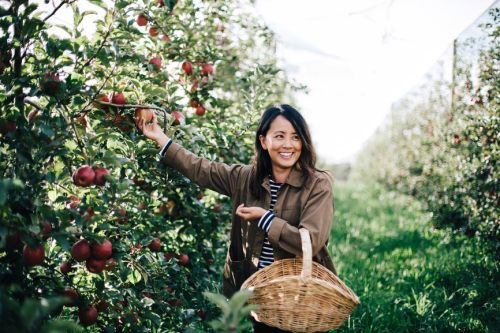CDC Ranks 13 Autumn and Thanksgiving Traditions by Risk of Exposure to COVID-19
The holidays won't look the same this year. In order to understand the risk levels of certain activities, read the CDC Thanksgiving recommendations.

Not to state the obvious, but the holidays won’t look the same this year. The pandemic means activities like large family gatherings and Black Friday shopping are now considered high-risk activities. In order to explain how certain Thanksgiving traditions and other autumn activities impact your risk of contracting COVID-19, the Centers for Disease Control and Prevention released a guide.
“Thanksgiving is a time when many families travel long distances to celebrate together,” says the CDC. “Travel increases the chance of getting and spreading the virus that causes COVID-19. Staying home is the best way to protect yourself and others.”
The lowest-risk activities are ones where you stay home with the people you live with. Moderate-risk activities include those that take place outdoors with proper socially distancing. Higher-risk activities include spending time in crowds or indoors among people you don’t live with.
If engaging in activities outside of the home and-or with people you don’t live with, the CDC recommends maintaining a distance of at least six feet or more from others; avoiding busy restrooms and eating areas; not shaking hands, bumping elbows, or giving hugs; wearing a mask at all times when around people who don’t live in your household; and avoid singing, chanting, or shouting, especially when not wearing a mask or when you can’t avoid being close to other people.
When sharing a meal with people outside of your home, the CDC recommends limiting the number of people coming in contact with food. The best way to do this is for everyone in attendance to bring food for themselves and members of their households. “Avoid any self-serve food or drink options, such as buffets or buffet-style potlucks, salad bars, and condiment or drink stations,” says the CDC. If sharing food, limit people going in and out of the areas where food is being prepared or handled and consider having one person serve all the food so that multiple people are not handling the serving utensils. Wear a mask while preparing or serving food to those you don’t live with and make sure everyone washes their hands with soap and water for 20 seconds (or uses a hand sanitizer with at least 60 percent alcohol if soap and water aren’t available) before and after preparing, serving, and eating food.
Fall and Thanksgiving activities by CDC-determined risk level
Lower-risk activities
- Having a small dinner with only people who live in your household
- Preparing traditional family recipes for family and neighbors, especially those at higher risk of severe illness from COVID-19, and delivering them in a way that doesn’t involve contact with others
- Having a virtual dinner and sharing recipes with friends and family
- Shopping online rather than in person on the day after Thanksgiving or the next Monday
- Watching sports events, parades, and movies from home
Moderate-risk activities
- Having a small outdoor dinner with family and friends who live in your community
- Visiting pumpkin patches or orchards where people use hand sanitizer before touching pumpkins or picking apples, wearing masks is encouraged or enforced, and people are able to maintain social distancing
- Attending small outdoor sports events with safety precautions in place
Higher-risk activities
- Going shopping in crowded stores just before, on, or after Thanksgiving
- Participating or being a spectator at a crowded race
- Attending crowded parades
- Using alcohol or drugs, which can cloud judgment and increase risky behaviors
- Attending large indoor gatherings with people from outside of your household
Oh hi! You look like someone who loves free workouts, discounts for cult-fave wellness brands, and exclusive Well+Good content. Sign up for Well+, our online community of wellness insiders, and unlock your rewards instantly.
Sign Up for Our Daily Newsletter
Get all the latest in wellness, trends, food, fitness, beauty, and more delivered right to your inbox.
Got it, you've been added to our email list.










